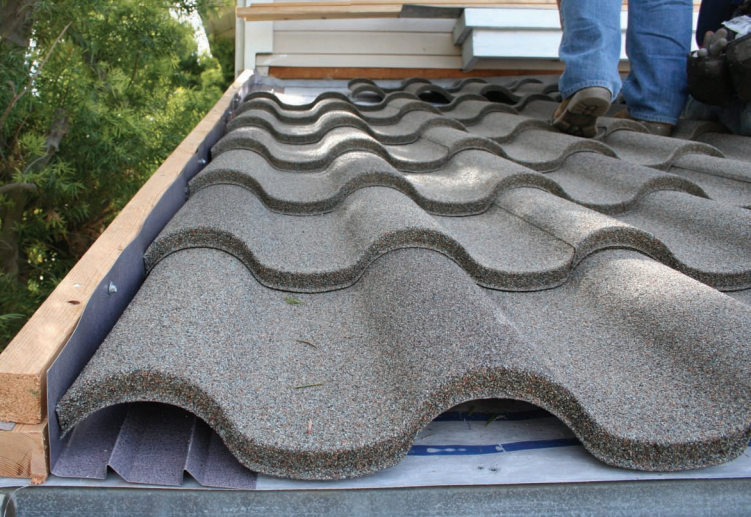Metal versus Concrete

By Decra.
Stone-coated steel stands up as green.
Determining the energy efficiency of a roof is a not an exact science and other factors can have an effect on the building’s efficiency: windows, doors, attic insulation as well as the number of people in the home. There are also external factors such as air temperature and humidity.
Enter a homeowner from just outside of Sacramento, Calif. In April 2007, this homeowner installed a DECRA Villa Tile roof in Pompeii Ash. The homeowner was anxious to see if the metal roof would be more energy efficient than the concrete tile. The previous roof was a grey concrete tile on a batten system, so the homeowner wanted to keep the overall appearance of the concrete grey color.
No changes were made in the venting method between the two installations and while DECRA Villa Tile is a direct to deck product the 3-1/4-inch barrel height on the product provides an offset from the roof deck.
Oak Ridge National Laboratories (www.ornl.net) conducted a study on roof assemblies and identified the benefits of offsetting a roofing product from the deck. In its study, a counter-batten/batten installation method was used. The airspace created between the roofing material and the deck increases the airflow across the deck and assists in pulling heated air away from the conditioned space. Less heated air in the attic equates to less stress on the cooling system and lower energy consumption.
As mentioned, DECRA Villa Tile is not installed on counter-battens/battens, but rather direct to the deck. Nonetheless, the high barrel height allows for the movement of air beneath the panel and simulates a counter-batten/batten installation.
The homeowner contacted DECRA (www.decra.com) with four years of data (2006 to 2009) summarizing the number of kilowatt hours used during the five hottest months in Northern California: June, July, August, September and October. Some variables were noted by the homeowner throughout the four years— the number of children at home over the course of the summer and instances of humidity. After reviewing the average daily temperature during the months of the years in question, it was noted overall the temperature was consistent with only a couple of outlying temperatures in 2006 and 2009.
With this said, the average number of kilowatt hours used in 2006 from June to October, when the concrete tile roof was installed, was 941. The Villa Tile roof was installed in 2007 and the average number of kilowatt hours used in 2007 was 748, in 2008 was 833 and in 2009 was 810. During this time, there has been a 15% lower use of kilowatt hours for 2007 through 2009, than were used in 2006.
This is not an exact science, nor is it a study conducted by scientists, it is just one homeowner looking to cut his energy use by switching to a metal roof— a stone coated steel roof. With consumers focusing on reducing energy costs, DECRA Villa Tile is a great choice for the homeowner. In addition to being energy efficient, DECRA Villa Tile has upwards of 25 percent post-consumer recycled steel, is easy to use with rain catch and solar panel systems, has a long life cycle and is low maintenance. All of these characteristics and benefits add up to an enduring, sustainable, roof.
Learn more about DECRA at www.decra.com.






















Comments
Leave a Reply
Have an account? Login to leave a comment!
Sign In